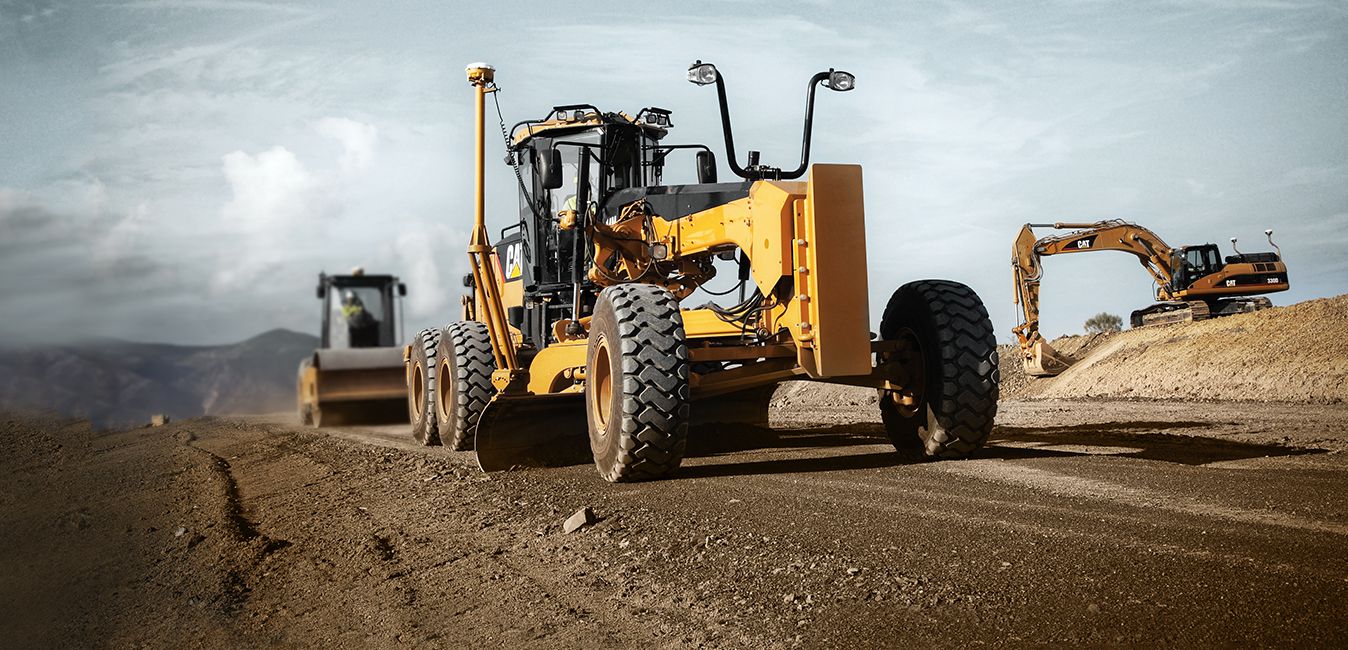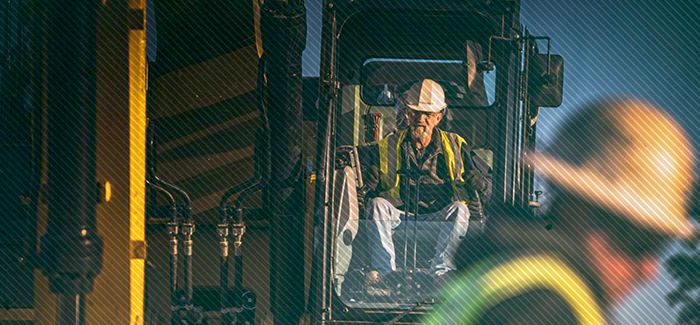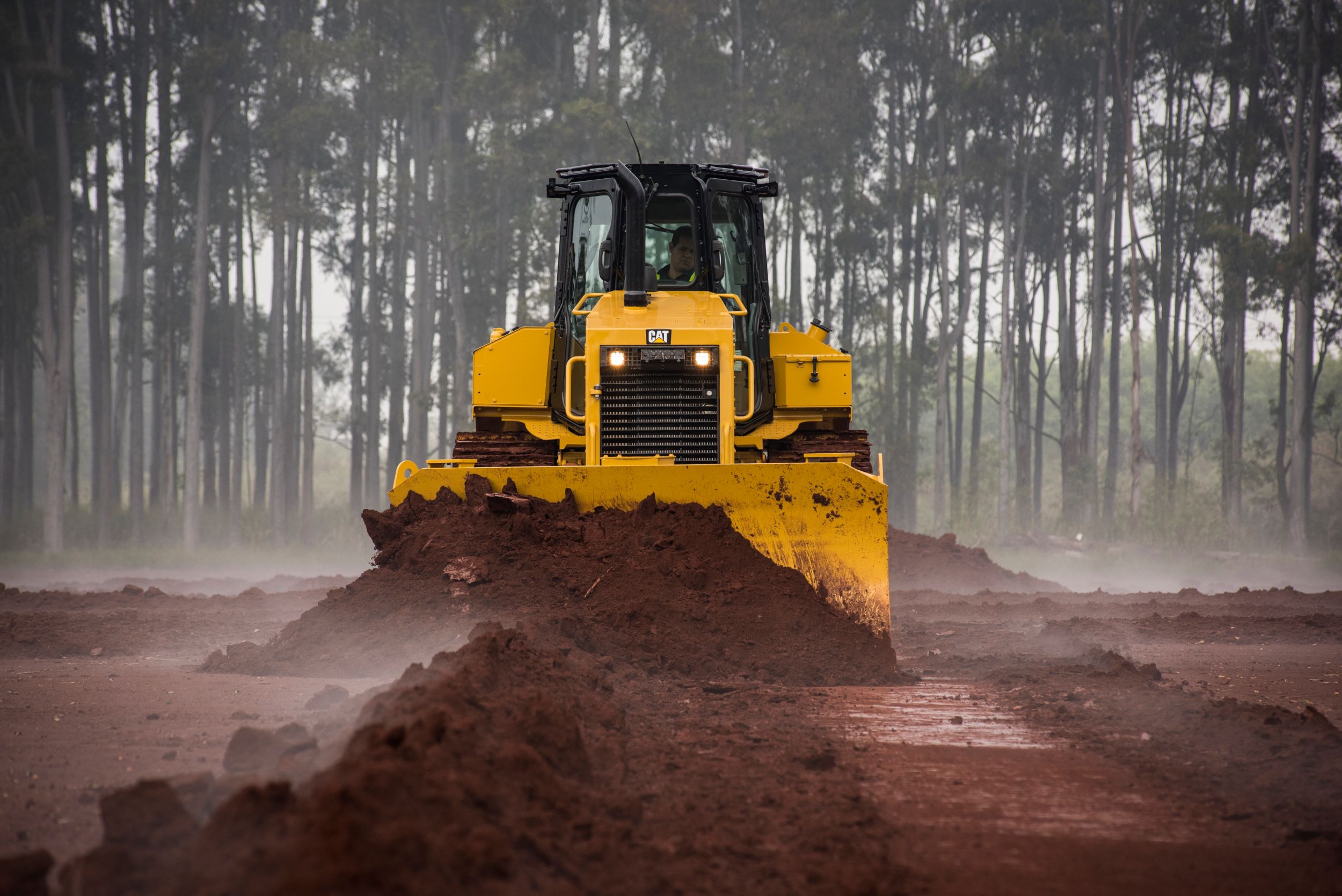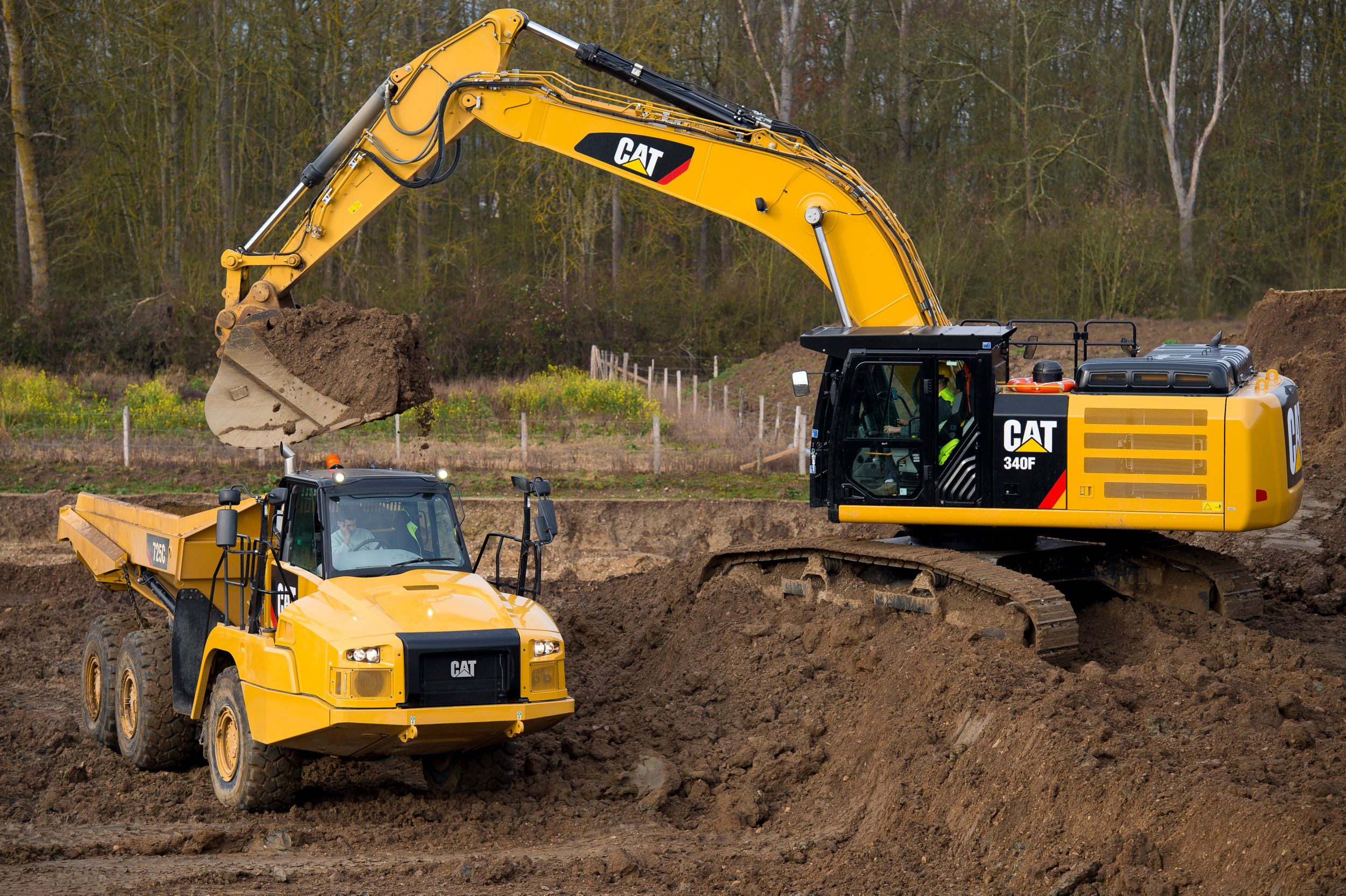

Sign In
Welcome! Sign In to personalize your Cat.com experience
If you already have an existing account with another Cat App, you can use the same account to sign in here
Register Now
One Account. All of Cat.
Your Caterpillar account is the single account you use to log in to select services and applications we offer. Shop for parts and machines online, manage your fleet, go mobile, and more.
Account Information
Site Settings
Security
Every Minute Counts
Life Cycle Costing Saves County $5 Per Hour of Motor Grader Operation
Greenlee County is 1,847 square miles. And Ron Pearson, public works manager, knows the county about as well as anyone.
Pearson, who is in charge of maintaining the county roadway system as well as the equipment fleet, started his career with Greenlee County 18 years ago as a motor grader operator.
The knowledge he gained rebuilding washed out roads, cutting out washboards, and other maintenance chores as a motor grader operator is invaluable in a county with terrain as varied as desert sands and forest roads.
County crews maintain 300 miles of unpaved roads and another 100 miles of paved roadway in the foothills of Arizona’s White Mountains. “We maintain everything from desert roads to forest service roads,” said Pearson. “I’ve been on all of the county roads many times.”
Unpaved roads are constructed using native materials, which vary from caliche to sand, clay, and gila conglomerate. “It’s almost like a cement base, but when you break it up, it lays down really nice,” Pearson said of gila conglomerate.
Grader bits serve as sand picks on motor grader moldboards to screen material, and provide a better gradation on the driving surface. “We can shape, and screen out material. It leaves a nice gravel driving surface,” said Pearson.
THE FLEET
Maintenance and other roadwork are done using three Cat® 140M Motor Graders, a 140M2 AWD, and a 140H.
“Operators not only have to adapt to all the different materials, they also have to adapt between two styles of graders,” said Pearson.
That’s where Empire Cat helps. The dealership provides training, including the use of simulators, to help operators meet the challenges of working on a variety of machines and road surfaces.
Empire Cat helped train operators who learned their trade using the steering wheel and shifters of traditional motor graders to make the transition to the joystick-controlled M Series. “They brought a simulator in before we even purchased the equip- ment,” said Pearson. “Trainers were here when the machines arrived.”
Pearson’s background as a motor grader operator has helped hone his knowledge of machines, and the features necessary to successfully complete county work.
When the county needed a motor grader primar- ily for snowplowing and other heavy-duty work, he knew the 140M2 AWD was the machine for the job. “The M2 has outstanding power,” Pearson said.
The M2 is one of two motor graders that the county uses primarily for special projects such as snow removal and rebuilding washed out roads. “We have a lot of monsoons. We may fix a road, then a monsoon hits, and everything is all blown out again,” Pearson said.
“THE M2 HAS OUTSTANDING POWER.”
The three 140M Motor Graders primarily perform road maintenance.
In years past, the county had kept motor graders as long as 20 years, but Life Cycle Costing that Pearson has been using since 2007 has shown that maintenance costs for older machines are prohibitive.
Today, motor graders are kept on a seven-year replacement cycle.
“We did a cost analysis and found that when you keep machines longer, maintenance costs are a lot higher. Now we do a seven-year rotation, which keeps us within the extended warranty we purchase for the machines,” Pearson said.
He has calculated that a motor grader with a 15-year life costs $47.67 per hour to run, while a machine with a seven-year life costs $42.66 per hour. That amounts to an annual savings of $4,509 per machine and $22,545 for the fleet.
“That includes everything—replacement cost, parts, labor, and fuel,” said Pearson.
Figures are based on actual costs to the county during the five years that Pearson has been using Life Cycle Costing. “We return the savings to the fleet. It’s a good investment. We have newer machines, receive a great return, and our maintenance costs are lower,” Pearson said.
FULL WARRANTY
By keeping machines for a shorter period, the county is not only saving $5 per hour of operation, the machines are also under warranty for the entire seven years that they are owned by the county.
Motor graders are acquired through lease-purchase agreements with Empire Cat, which include guaran- teed buybacks from the dealer or the option of selling to another party.
“Lately, we’ve been realizing a greater return on our graders than the guaranteed buyback,” said Pearson. “When we resell equipment, it is very well maintained and very well documented.”
Empire services Greenlee County’s motor grader fleet. Service includes S•O•SSM Fluids Sampling. “We receive full reports on everything. We can head off problems before they occur,” said Pearson. “One of the main reasons we go with Cat equipment is the service. That is invaluable to us. If anything happens, they have a facility in the county and are here within an hour.”
Greenlee County is a three and one-half to four- hour drive from Phoenix and Tucson, so reliable equipment is essential.
“Because we’re so remote, we have to have reliable equipment. Identifying issues before they happen is critical for us,” Pearson said.
RELATED ARTICLES
You’re here to get ideas to grow your business. Read on for machine insights and expert tips and tricks to get more out of every job.
-
Better Bids In Five Steps
Whether you’re putting together your first bid or your 500th, here are a few strategies you can follow that will make the process easier.
Learn More -
Rolling Resistance Factors
You can use rolling resistance factors to help you identify which equipment will be most efficient on your worksite.
Learn More -
How to Measure Loose Density in the Field
Material Density determines bucket and machine choices. Construction companies often select the size of machine they believe is required and equip it with a standard bucket, but this approach might short change productivity.
Learn More -
Swell & Void Percentage, Load Factors
Learn about Swell and Void Percentages, load factors and how they can affect your fuel efficiency.
Learn More





